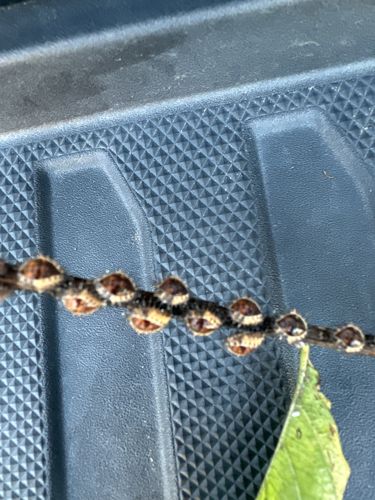Bagworm
Scientific Name: Thyridopteryx ephemeraeformis (Common Bagworm or Evergreen Bagworm, a widely recognized species)
Order & Family: Lepidoptera, Psychidae (Bagworm Moths)
Size: Larval bags typically range from 1/4 inch to 2.5 inches (6 mm to 60 mm) in length when mature. The larva inside is proportional to the bag size.

Natural Habitat
Found on a wide variety of trees and shrubs in gardens, landscapes, nurseries, and natural forested areas.
Diet & Feeding
Mostly herbivorous, feeding on the foliage of various trees and shrubs, particularly conifers (e.g., arborvitae, juniper, pine, spruce) and deciduous trees (e.g., maple, sycamore, willow). They chew on leaves and needles.
Behavior Patterns
Bagworms construct a protective case around themselves using silk and bits of plant material. The larvae remain inside this bag, enlarging it as they grow. They are slow-moving and generally remain on their host plants. Adult males are winged and fly to find females; adult females are wingless and remain in their bags, attracting males with pheromones. Eggs overwinter in the female's bag.
Risks & Benefits
Potential risks: Bagworms can be significant pests, especially in landscape settings. Heavy infestations can defoliate and even kill host plants, particularly evergreens, if not managed. They can cause aesthetic damage. Benefits: In natural ecosystems, they are part of the food chain, but their overall ecological benefits are not widely emphasized compared to their pest status.
Identified on: 8/9/2025